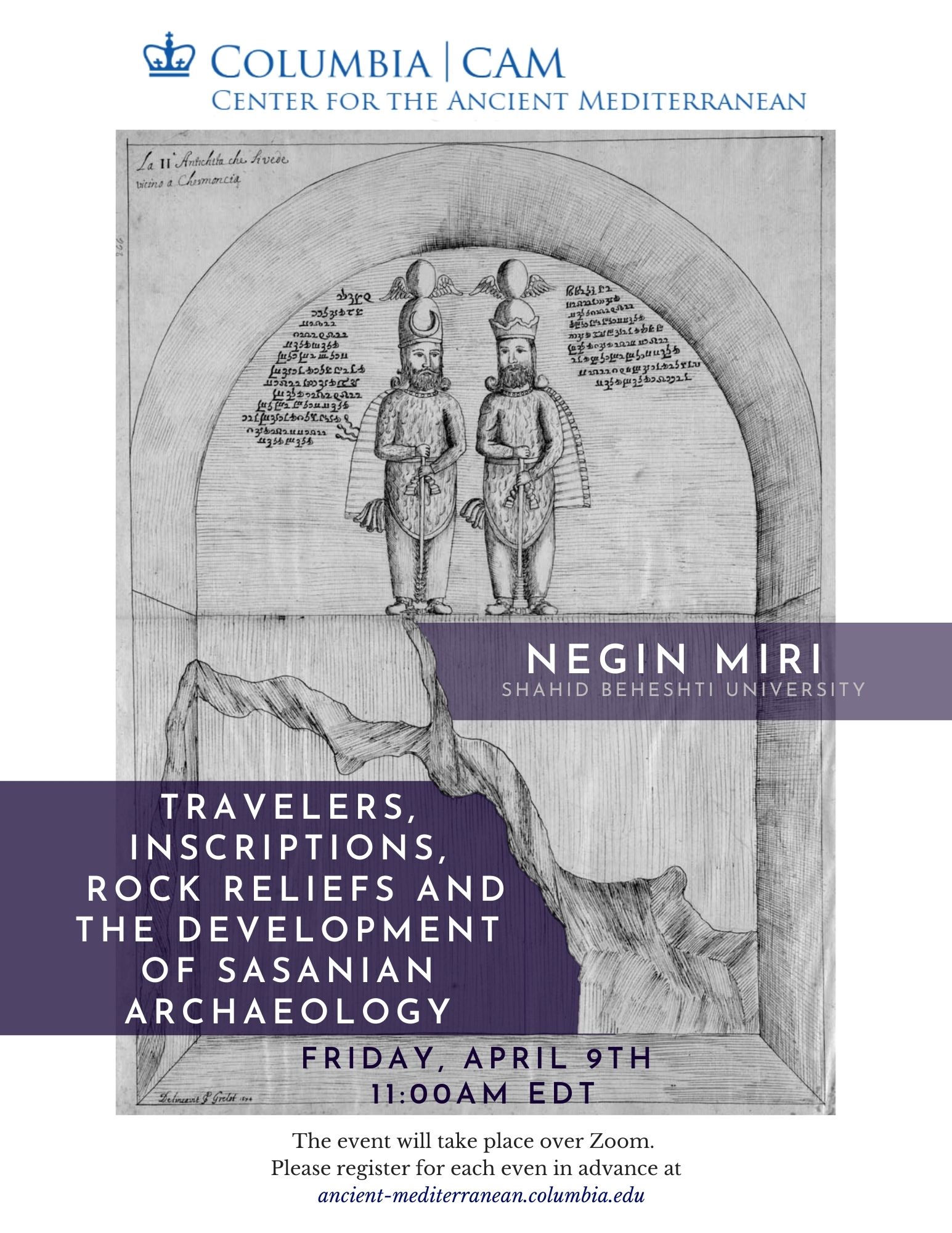
11:00 am – 1:00 pm
Zoom
Please register here in order to receive the zoom link for the event.
Title:Travelers, Inscriptions, Rock Reliefs and the Development of Sasanian Archaeology
Abstract: When dealing with the general history of the Sasanian archaeology, it can be confidently claimed that the Sasanian archaeology essentially did not develop from genuine archaeological investigations at Sasanian archaeological sites, but from reports and drawings of European travelers who visited Iran between the 17th and 18th centuries.
A diverse range of European travelers – diplomats, merchants, missionaries – voyaged to the Safavid kingdom. European travelers entered Iran either from its western and northwestern borders or from the south. Isfahan, Iran’s capital, was located inland. Hence, both visitors coming from Ottoman lands or Russia as well as those arriving from the Persian Gulf ports had to cover long distances to reach the capital. These curious voyagers have left us with reports about many ancient sites or monuments they visited en route to the Safavid court, in many cases accompanied with fascinating drawings of those monuments, reliefs, inscriptions and landscapes. Travelogues were published upon their return to Europe, hence providing European scholars, who did not have direct access to these monuments, with valuable visual and descriptive material about Persia’s antiquities and in other words nourished their studies.
Deciphering ancient inscriptions were particularly dependent of the copies published in these travelogues. Decipherment of Parthian and Middle Persian inscriptions in 1793, more than a century since they were first copied and published in 1660s, was a groundbreaking achievement. It led to the historical identification of portraits of the lesser-known Sasanian dynasty depicted on beautiful coins and finally brought all those mysterious figures in the bas reliefs of Taq-e Bostan and Naqsh-e Rostam into the scene of history as real kings of a long forgotten empire – figures who were so naively believed to be Rostam, the legendary Persian hero of Shahnameh, much praised by local Persians who had lost their historical consciousness about their pre-Islamic past. Further progresses in Sasanian numismatics and historical scholarship enriched by publication of more inscription and reliefs’ drawings in the 19th century travel accounts, finally led to development of Sasanian archaeology in the late 19th and early 20th century.

